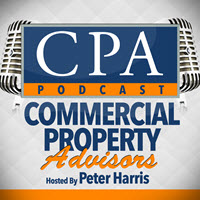There are 7 essential calculations needed to make an intelligent offer on any commercial deal. Implementing this strategy will help you achieve your goal of investing in a cash flowing property, and you will avoid two pitfalls that many beginner investors fall into, overpaying for a property and the dreaded negative cashflow scenario.
Goals When Making an Offer:
- Purchase a property in a stable and growing neighborhood
- Positive cashflow
- Cash on Cash Return in the Double Digits
- Upside Potential (meaning the ability to raise rents over time and reduce expenses, thus increase your NOI)
How do you achieve these four goals? How do you avoid making the rookie mistake of overpaying for a property? And what do you base your offer amount on? The broker brochure looks beautiful, but this is not a reliable source to base your offer on. Likewise, if you solely base your offer on the seller’s three years of financials, you will experience lower cashflow and a lower return on investment.
Beware of the Broker Brochure
The broker brochure is a multi-page booklet with beautiful photos, prices, demographics, and other useful information. It’s your introduction to the deal and it’s main function as a sales tool is to evoke an emotional response that leads you to take action. Unfortunately, as emotion goes up, intelligence goes down. If you use the broker brochure to determine your offers, you will overpay. Therefore, do not make any offers based on your response to the broker brochure.
Seller Financials: Also, do not base your calculations on the property’s income from the information on the broker brochure or the seller’s financials because these are not always accurate. Typically, you will receive three years of seller financials to show the income, expenses, and NOI of the commercial property. However, you need to do your own research to get a more accurate value number. The seller’s motive is to make the numbers look good, so you should always do your own calculations for each commercial property deal.
Pro Forma: The broker brochure also contains a Pro Forma, which is the best-case scenario for a property. It is important to research your own Pro Forma to determine the upside potential.
7 Essentials Calculations You Need BEFORE Making an Offer
1.Property Income: You need to know the property’s income for the last 12 months including the current month, as well as the last 3 years to give you an overview of the property’s performance.
2. Expenses: Beginner investors tend to miscalculate the expenses, so pay close attention to this area. Knowing how to calculate these expenses correctly enables you to distinguish good deals from bad deals. Your ability to force appreciation is the driver of your commercial property value. The income minus expenses equals the Net Operating Income. As the NOI goes up, the property value goes up. As the NOI goes down, property value declines with it.
3. Mortgage: Before you make an offer, take your deal to a couple lenders to determine your down payment and interest rate so that you can calculate what your yearly mortgage will be. Knowing the mortgage details is important because it helps you calculate how much the property will cashflow. The NOI minus your mortgage equals your cashflow. Therefore, you must know the mortgage rate to determine the cashflow of the property.
4. Cashflow: Use the previous calculations to determine the property’s cashflow.
5. Cash on Cash Return: This is a metric used to determine the performance of commercial real estate. It measures the yearly return on the property in relation to the amount of mortgage paid during the same period. A high cash on cash return means your money is moving fast. A low cash and cash return means your money will be staying in investment for a long time. Your goal should be to target a double-digit cash on cash return.
6. Cap Rate: The cap rate is the property’s potential rate of return. It is calculated by dividing expected net operating income by property value. This tool helps you compare the value of similar commercial real estate investments in that market.
7. Capital Expenses: These are the expenses not included in the typical costs of a deal, such as repairs or new appliances. You need to determine these expenses prior to making an offer on the deal.
For further teaching on these 7 essential calculations and how they work, watch my video, ” The Seven Commercial Real Estate Terms You Should Know”.
Calculating Your Offer:
Once you have calculated these seven essentials you will be ready to make an offer. Determine the cash on cash return and cap rate that works for you. Next, calculate in all of the expenses and come up with a conservative number you can afford and is supported by the numbers and make that your offer of purchase.
If you calculate these 7 essentials before making an offer it will help you achieve your 4 goals as a commercial real estate investor. Not only will you avoid overpaying and day one negative cashflow, but you will also gain credibility and build a good reputation. This is an important aspect of building your investment portfolio because commercial real estate is a relationship business.




